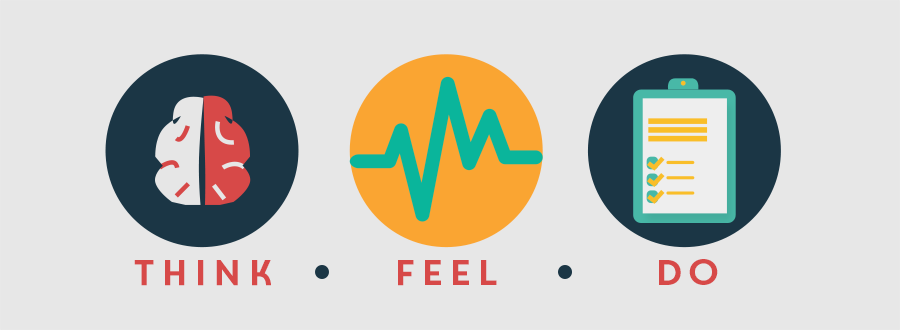Think. Feel. Do. How Best to Develop and Deliver a Persuasive Presentation
Locking down your story is step one in my proprietary GAPP™ (Generally Accepted PRESENTATION Principles) method to increase your persuasiveness with all strategic communications.
Begin with the end in mind" is one of Dr. Stephen Covey's Seven Habits of Highly Effective People. This approach applies directly to strategic communications and persuasive presentations.
When you are preparing to give a presentation, the key question to ask yourself is: "After receiving my presentation, exactly what do I want the audience to think, feel and do?" This powerful approach addresses the three components to effectively drive the recipients towards a "Yes!"
Think refers to the left-brain, linear, logical, orderly processing. Your goal is to have your audience agree with your key messages.
Feel references the right-brain, emotions, heart, passions, etc. It is essential to also tap the emotional aspects of your story.
Do is the change in action or perspective you seek as a result of the presentation. What, exactly, do you want the recipient to think or do differently after hearing your presentation?
Be concise and crystal clear with those three answers. Then you're ready to begin developing your presentation. If you strategically think through the entirety of your presentation before starting to develop your content it is much more likely to be effective. Your Think / Feel / Do answer becomes the core message of both your presentation's promise and summary.
Incorporate Think / Feel / Do as an approach for all strategic, persuasive communications.
THREE STEPS TO HEAR “YES!” MORE OFTEN
Let’s get this out of the way: the wrong way to begin developing your presentation is to open a slide program and start crafting your deck. As Lewis Carroll said, "If you don't know where you're going, any road will get you there."
Know exactly where you're "going" by following these three steps:
Begin with the Think / Feel / Do approach. This lets you work backward to develop your story, and often serves as the best way to begin if you are presenting. Remember, whether you’re selling or just convincing the audience of a certain point-of-view, connecting with both emotion and logic is essential.
Write the WIN memo. WIN isn't an acronym; it’s the end result of an effective presentation...you win! This technique is particularly helpful in sales opportunities. Often the ultimate decision-maker doesn't attend your presentation, but she asked one of the colleagues who did attend to send her a brief memo explaining the team's recommendation. Help her colleague explain why YOU are their best choice. What would the attendee say in that memo? This theoretical memo provides a great place to focus your story. The WIN memo is particularly appropriate in sales presentations.
Story / Content / Principles of Theater. Working in a logical and linear manner, prepare your content skeleton. Bring your story to life through the effective use of imagery, stories, quotes, etc... And finally, hone your delivery to create engagement, trust and advocacy.
And then, practice, practice, practice...if you want to get to Carnegie Hall ☺
I always suggest three rehearsals: walk through, run through and dress rehearsal. Next comes "Showtime!" This is usually the best one of all!
We've learned over and over that going through these steps will help every presenter hear a "Yes!" more often.
So the next time you need to develop and deliver a persuasive presentation, or any strategic communications, start with the end-in-mind and you'll be much more successful.
Onward.

